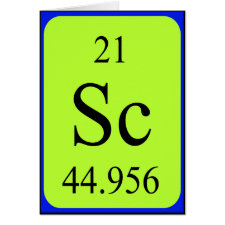
Authors: Gupta R, Kumar A
Article Title: Molecular imprinting in sol-gel matrix.
Publication date: 2008
Journal: Biotechnology Advances
Volume: 26
Issue: (6)
Page numbers: 533-547.
DOI: 10.1016/j.biotechadv.2008.07.002
Alternative URL: http://www.sciencedirect.com/science/article/B6T4X-4T1940V-1/2/4f78787d99b20abdd6514e8ddcf1c4a1
Abstract: Molecular imprinting is a newly developed methodology which provides molecular assemblies of desired structures and properties and is being increasingly used for several applications such as in separation processes, microreactors, immunoassays and antibody mimics, catalysis, artificial enzymes, biosensor recognition elements and bio- and chemo-sensors. The ambient processing conditions and versatility of the sol-gel process makes sol-gel glassy matrix suitable for molecular imprinting. The progress of sol-gel based molecular imprinted polymers (MIPs) for various applications can be seen from the growing number of publications. The main focus of the review is molecular imprinting in sol-gel matrix and applications of molecular imprinted sol-gel derived materials for the development of sensors. Combining sol-gel process with molecular imprinting enables to procure the sensors with greater sensitivity and selectivity necessary for sensing applications. The merits, problems, challenges and factors affecting molecular imprinting in sol-gel matrix have been discussed. Considerable attention has been drawn on recent developments like use of organically modified silane precursors (ORMOSILS) for the synthesis of hybrid molecular imprinted polymers (HMIPs) and applying surface sol-gel process for molecular imprinting. The development of molecular imprinted sol-gel nanotubes for biochemical separation and bio-imprinting is a new advancement and is under progress. Templated xerogels and molecularly imprinted sol-gel films provide a good platform for various sensor applications
Template and target information: Review - MIPs sol-gels, retracted paper
Author keywords: molecular recognition, molecular imprinting technique, Molecularly imprinted polymers, sol-gel, Templated xerogels, surface molecular imprinting, Bio-imprinting.



Join the Society for Molecular Imprinting

New items RSS feed
Sign-up for e-mail updates:
Choose between receiving an occasional newsletter or more frequent e-mail alerts.
Click here to go to the sign-up page.
Is your name elemental or peptidic? Enter your name and find out by clicking either of the buttons below!
Other products you may like:
 MIPdatabase
MIPdatabase









